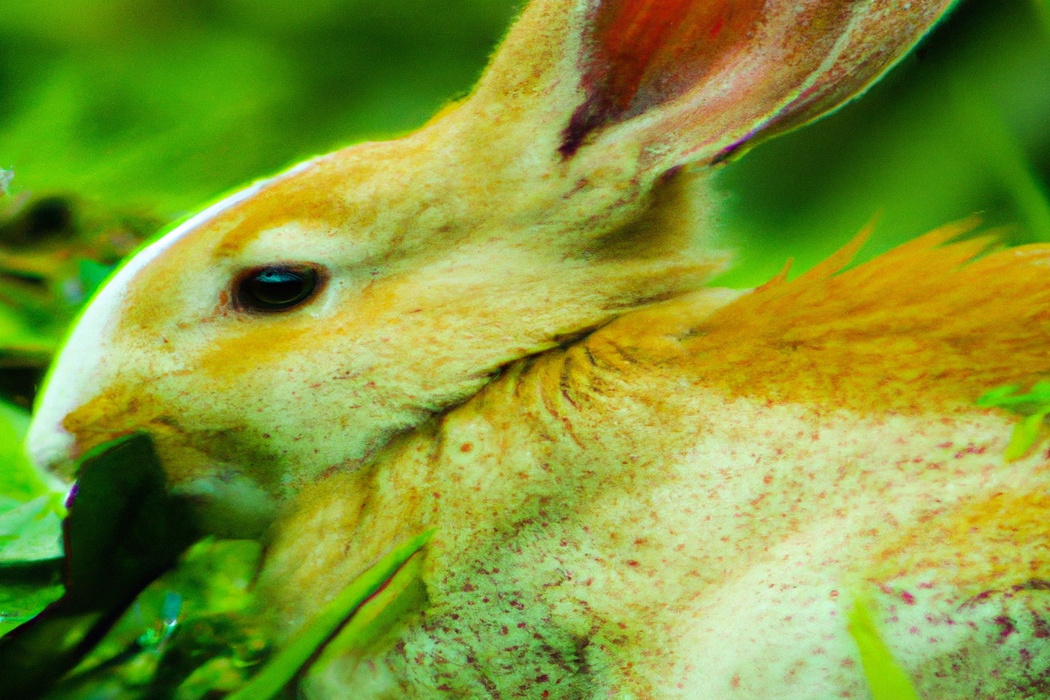Should I Let My Rabbit Roam Free At Night? The Ultimate Guide
Key Takeaways:
- It is generally not recommended to let your rabbit roam free at night.
- Outdoor conditions can pose various risks to the safety and health of your rabbit.
- Providing a safe and secure indoor living space is important for your rabbit’s well-being.
- Supervised playtime during the day can be a suitable alternative to letting your rabbit roam free at night.
Do you ever wonder if your rabbit is missing out on nighttime adventures? It’s tempting to let them roam free, but before you do, it’s crucial to consider the importance of their safety and security.
Understanding a rabbit’s natural behavior and habitat, the potential dangers they may encounter, and how to create a safe indoor environment are paramount.
In this article, we’ll explore the alternative options for nighttime exercise, address common concerns, and provide useful tips to ensure your rabbit’s safety and happiness. Let’s dive in and find the best solution together!
| Pros | Cons |
| Rabbits are natural explorers and enjoy the freedom to hop around. | Rabbits can chew on furniture, wires, and other household items, which can be dangerous. |
| Exercise and mental stimulation can help prevent obesity and boredom-related behaviors. | Rabbits can be difficult to catch if they escape or hide in small spaces. |
| Allows rabbits to stretch their legs and engage in natural behaviors. | There is a risk of injury if a rabbit encounters predators or inhales toxic substances. |
| Provides an opportunity for bonding and interaction with your rabbit. | Rabbits may have accidents (e.g., urinating or defecating) outside of their litter box. |
| Allows rabbits to follow their natural sleep and activity patterns. | Rabbits can be noisy at night, which may disrupt your sleep. |
The Importance of a Rabbit’s Safety and Security at Night
Ensuring your rabbit’s safety and security at night is of utmost importance.
Understanding a Rabbit’s Natural Behavior and Habitat
Understanding a rabbit’s natural behavior and habitat is key to providing a safe and comfortable environment for them. Rabbits are social animals that thrive in pairs or groups, so it’s important to consider their need for companionship.
They also require plenty of space to hop, run, and explore.
Providing hiding spots, toys, and tunnels can help mimic their natural habitat and keep them mentally stimulated. Additionally, rabbits are prey animals, so they need a secure enclosure that protects them from predators.
By understanding their needs, you can create a happy and healthy home for your rabbit.

Potential Dangers and Risks of Letting a Rabbit Roam Free at Night
Letting your rabbit roam free at night can be risky.
Here are some potential dangers and risks:
- Predators: Rabbits are vulnerable to predators like foxes, cats, and even birds of prey. When they’re out at night, the risk of encountering a predator increases.
- Getting lost: Rabbits have a tendency to wander off and can easily become disoriented in the dark. If they get lost, it can be challenging to find them.
- Traffic accidents: Roads can be dangerous for rabbits. They may not be visible to drivers at night, leading to potential accidents.
- Poisonous plants: Some plants that are harmless during the day may be toxic to rabbits. Without supervision, they may consume something harmful.
To ensure your rabbit’s safety, it’s best to keep them in a secure and enclosed area during the night.
Creating a Safe Indoor Environment for Your Rabbit
When creating a safe indoor environment for your rabbit, there are a few key things to keep in mind.
Firstly, make sure to remove any hazards such as electrical cords or toxic plants.
Secondly, provide your rabbit with a comfortable and secure living space, like a spacious cage or pen.
Thirdly, ensure that your rabbit has access to fresh water and a balanced diet.
Lastly, give your rabbit plenty of opportunities for exercise and mental stimulation.
By taking these steps, you can create a safe and happy environment for your furry friend.
Alternative Options for Nighttime Exercise and Stimulation
Alternative options for nighttime exercise and stimulation include providing adequate space within an enclosed area, interactive playtime for mental stimulation, and using enclosed outdoor runs.
Providing Adequate Space for Exercise Within an Enclosed Area
To provide adequate space for exercise within an enclosed area for your rabbit, make sure the area is large enough for them to hop, run, and play.
Clear any obstacles and hazards to prevent accidents.
Provide plenty of toys, tunnels, and interactive objects to keep them engaged.
You can also create different levels or platforms for your rabbit to explore.
Regularly rotate and introduce new toys to keep their environment stimulating.
Consider both horizontal and vertical space to maximize their exercise opportunities.
Interactive Playtime and Mental Stimulation for Rabbits
Interactive playtime and mental stimulation are essential for the well-being of rabbits.
Providing them with engaging activities keeps them physically and mentally active.
Some ideas for interactive playtime include playing with toys, hiding treats for them to find, and setting up obstacle courses for them to navigate.
You can also engage their curiosity by rotating toys and creating new environments for them to explore.
Mental stimulation can be achieved by introducing puzzle toys or clicker training.
Remember to always supervise playtime and ensure that the toys and activities are safe for your rabbits.

Using Enclosed Outdoor Runs for Nighttime Outdoor Time
If you’re looking for a safe way to give your rabbit nighttime outdoor time, using an enclosed outdoor run is a great option. These runs provide a secure space for your rabbit to explore and exercise while keeping them protected from predators.
Make sure the run is securely fenced with a roof and check for any potential escape routes.
Set up the run in a quiet area away from noise and bright lights to create a calming environment for your rabbit. Remember to supervise your rabbit during their outdoor time and provide plenty of fresh water and shelter.

Addressing Common Concerns about Letting Rabbits Roam at Night
If you’re worried about letting your rabbit roam at night, I’ll address some common concerns to put your mind at ease.
Rabbits’ Ability to Adapt to a Nocturnal Schedule
Rabbits have a natural inclination towards being active during the nighttime, making them adaptable to a nocturnal schedule.
They can adjust their daily rhythms and become more active during the night.
This behavior is a result of their evolutionary history and survival instincts.
However, it is important to ensure their safety and provide a suitable environment for them to roam freely at night.
Keep in mind that each rabbit is unique, so observe their behavior and make sure they have a secure, rabbit-proofed space to explore during the nighttime hours.
Risks of Predators and Strangers Approaching Your Rabbit at Night
At night, your rabbit may face risks from predators and strangers approaching. Predators such as foxes, raccoons, and stray cats could pose a threat to your rabbit’s safety.
Additionally, strangers in the vicinity might disturb or even harm your rabbit.
It’s important to be cautious about letting your rabbit roam free at night to protect them from potential harm. Consider providing a safe and secure enclosure or area for your rabbit to explore during the day instead.
Ensuring Safe and Comfortable Sleeping Arrangements for Rabbits
To ensure safe and comfortable sleeping arrangements for your rabbit, here are a few things you can do:
- Provide a cozy and spacious sleeping area that allows your rabbit to stretch out comfortably.
- Use bedding materials that are safe and non-toxic, such as timothy hay or straw.
- Make sure the sleeping area is well-ventilated and free from drafts.
- Offer hiding spots or shelters where your rabbit can retreat to for privacy and security.
- Keep the sleeping area clean by regularly removing soiled bedding and replacing it with fresh material.
- Place the sleeping area away from loud noises or high-traffic areas to minimize disturbances.
- Monitor the temperature in the sleeping area to ensure it is neither too hot nor too cold for your rabbit.
By providing a safe and comfortable sleeping environment, you can ensure that your rabbit gets the rest it needs for a healthy and happy life.
Useful Tips for Ensuring a Rabbit’s Safety and Happiness at Night
To ensure your rabbit’s safety and happiness at night, focus on implementing a secure rabbit-proofing system in your home, providing appropriate hiding spots and comfortable sleeping areas, and scheduling regular vet check-ups and health monitoring for your rabbit.
Implementing a Secure Rabbit-Proofing System in Your Home
To create a secure rabbit-proofing system in your home, consider these tips:
- Secure electrical cords and cables by using cord covers or enclosures to prevent chewing or entanglement.
- Block off access to unsafe areas like the kitchen, where rabbits could access toxic food or chemicals.
- Cover or store away any potentially dangerous objects or plants that a rabbit could chew on or ingest.
- Use baby gates or barriers to restrict access to certain rooms or areas of the house.
- Ensure that windows and doors are properly secured to prevent escape or injury.
- Provide safe hiding spots and toys to keep your rabbit entertained and prevent destructive chewing.
- Regularly inspect your rabbit’s living space for any potential hazards or damage that needs to be addressed.
By implementing these measures, you can create a safe and happy environment for your rabbit to roam free in your home.
Providing Appropriate Hiding Spots and Comfortable Sleeping Areas
One key aspect of ensuring your rabbit’s safety and happiness at night is providing appropriate hiding spots and comfortable sleeping areas. This allows your rabbit to feel secure and have a place to retreat to when they need some alone time.
A hiding spot can be as simple as a cardboard box or a covered tunnel.
For a comfortable sleeping area, provide soft bedding such as hay or fleece. Remember to regularly clean and replace the bedding to keep it fresh and hygienic.
Regular Vet Check-ups and Health Monitoring for Your Rabbit
Regular vet check-ups and health monitoring are essential for your rabbit’s well-being.
During check-ups, the vet will examine your rabbit’s overall health, teeth, and nails.
They will also provide necessary vaccinations and treatments for common rabbit ailments.
Monitoring your rabbit’s health at home involves observing their appetite, behavior, and litter box habits.
Any changes should be reported to the vet promptly.
Keeping up with regular vet visits will ensure early detection and intervention, promoting your rabbit’s long and healthy life.
Frequently Asked Questions
Can I let my rabbit roam freely in a secure outdoor area at night?
Yes, you can let your rabbit roam freely in a secure outdoor area at night, as long as the area is properly fenced and protected from predators. Make sure the enclosure is escape-proof and has a roof or netting to prevent your rabbit from jumping or climbing out.
Provide adequate shelter and hiding spots, and ensure that the area is free from toxic plants.
Regularly check the enclosure for any potential hazards and provide fresh food, water, and bedding. Remember to monitor your rabbit’s behavior and bring them indoors if there are any signs of distress or danger.
How do I create a safe indoor environment for my rabbit during the night?
To create a safe indoor environment for your rabbit during the night, here are a few important tips:
- Provide a secure cage or hutch: Make sure the cage or hutch is spacious enough for your rabbit to move around comfortably and has secure doors or latches to prevent escapes or accidents.
- Eliminate potential hazards: Remove any toxic plants, electrical cords, or small objects that your rabbit could chew on, as these can be dangerous if ingested.
- Create a cozy sleeping area: Line the cage with soft bedding like hay or shredded paper to provide a comfortable place for your rabbit to rest and sleep.
- Maintain a suitable temperature: Ensure that the room where your rabbit is kept is at a comfortable temperature, generally between 60-70 degrees Fahrenheit (15-21 degrees Celsius.
- Provide appropriate lighting: Avoid leaving bright lights on all night, as rabbits prefer dimmer environments for sleeping. Use a nightlight or cover the cage partially to create a darker space.
Remember, rabbits are naturally active during the night, so ensuring a safe and comfortable environment for them to explore and rest will help keep them happy and healthy.
Can rabbits adjust to a nocturnal schedule?
Rabbits are naturally crepuscular, which means they are most active during dawn and dusk. While they can adapt to some changes in their schedule, it may be difficult for them to adjust to a completely nocturnal lifestyle.
Rabbits rely on natural light cues to regulate their activity and sleep patterns.
Attempting to keep a rabbit awake and active during the night could disrupt their natural behavior and lead to stress or health issues. It’s best to provide a consistent routine and environment for your rabbit, allowing them to follow their natural instincts.
Are there any precautionary measures to take if I choose to let my rabbit roam free at night?
If you decide to let your rabbit roam free at night, there are some precautionary measures you should consider.
Firstly, make sure your home is bunny-proofed to minimize any potential dangers or hazards.
This includes securing electrical cords, removing toxic plants, and blocking off any small spaces where your rabbit could get stuck.
Secondly, ensure that your rabbit has a safe and enclosed space to retreat to if they feel scared or overwhelmed.
This could be a designated room or a crate with bedding and toys.
Lastly, keep a close eye on your rabbit during their nighttime adventures to ensure they are safe and not getting into any trouble.
By taking these precautions, you can help provide a safe environment for your rabbit to roam free at night.
Final Verdict
While it may be tempting to let your rabbit roam free at night, it poses significant risks to their safety and well-being. Understanding a rabbit’s natural behavior and habitat is crucial in creating a safe indoor environment for them.
Providing alternative options for nighttime exercise and stimulation, such as enclosed areas and interactive playtime, can keep them happy and healthy.
Addressing common concerns, such as predators and safe sleeping arrangements, is essential. By implementing a secure rabbit-proofing system and regular vet check-ups, you can ensure both the safety and happiness of your rabbit at night.
So, it’s best to prioritize their safety and create a secure and comfortable environment for them to thrive in.








